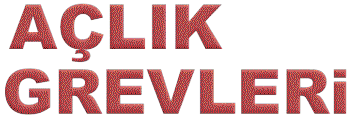| . |
 



|
|
Clin Neurophysiol 2000
Nov;111(11):2064-70
Neuromuscular consequences of
prolonged hunger strike: an electrophysiological study. ge AE, Boyaciyan A, Gokmen E,
Kinay D, Sahin H, Yazici J, Gurvit H
Department of Neurology, Istanbul
University, Istanbul Faculty of Medicine, Capa 34390, Istanbul, Turkey.
[Medline record in process]
Objectives: The purpose of this
study was to determine the electrophysiological consequences of neuromuscular and central
nervous system involvement in a group of patients presented with the neurological
complications of a long-term hunger strike (HS). Methods: Motor and sensory nerve
conduction (NCV), F wave, somatosensory evoked potential (SEP) and motor evoked potential
(MEP) studies were performed in 12 male and 3 female patients (mean age: 29.4) following
HS.Results: All patients whose weight loss was 11-31 (mean: 22.8) kg after 69-day HS, had
neurological findings consistent with Wernicke's encephalopathy or Wernicke-Korsakoff
syndrome. Abnormally prolonged latency and/or low amplitude sensory nerve action
potentials were found in 7 patients. The amplitudes of compound muscle action potentials
were significantly reduced in ulnar, median and tibial motor NCV studies as compared to
the controls. F waves elicited by median nerve stimulation at wrist and muscle responses
evoked by cervical and lumbar magnetic stimulation had significantly prolonged latencies.
MEPs recorded from the lower extremities showed a slight prolongation in central
conduction times. The cortical response latencies were prolonged in tibial SEPs.
Conclusions: The most prominent finding in this patient group was the low amplitude of
CMAPs elicited in motor NCV studies which was concluded to be resulted from the reversible
muscular changes. The other electrophysiological findings suggested that peripheral nerves
and long central nervous system pathways were also mildly involved.
PMID: 11068243, UI: 20522137 |
|
 .........
.........